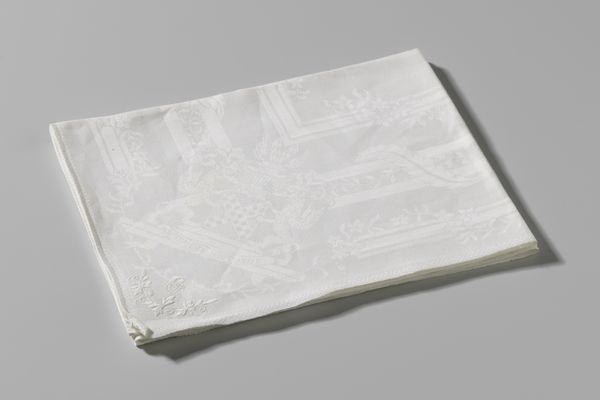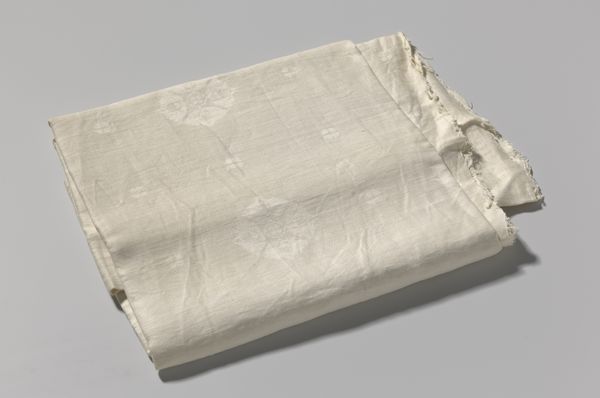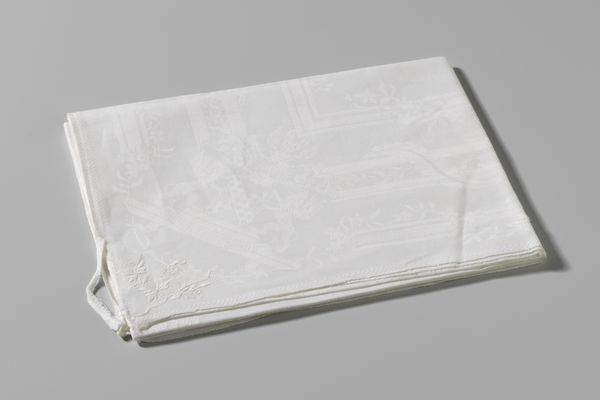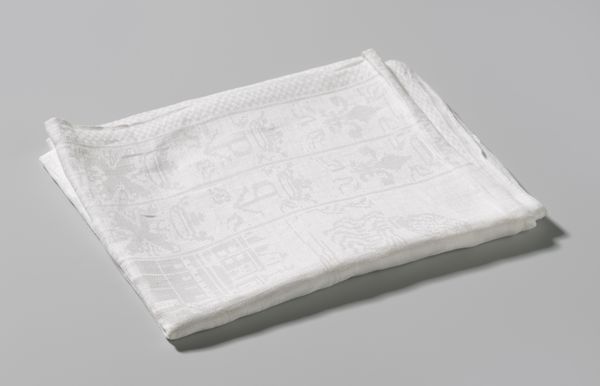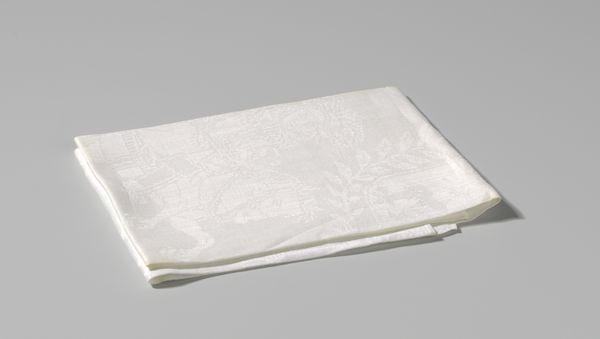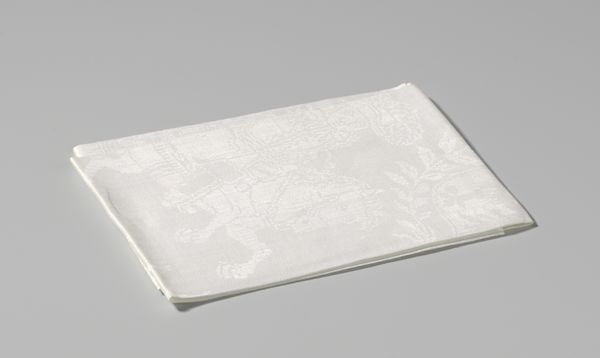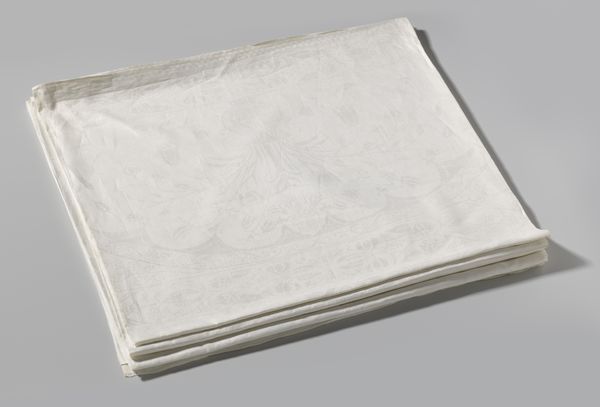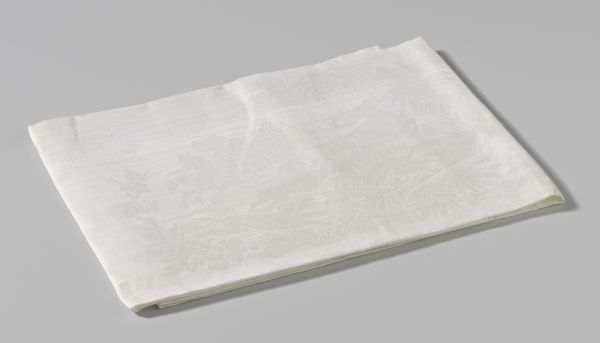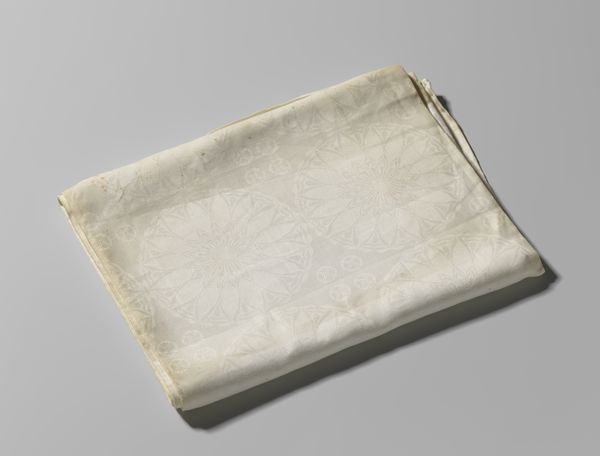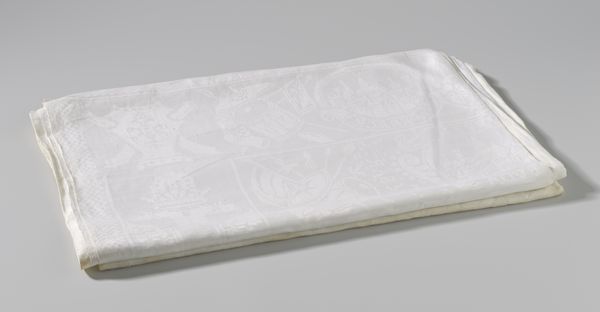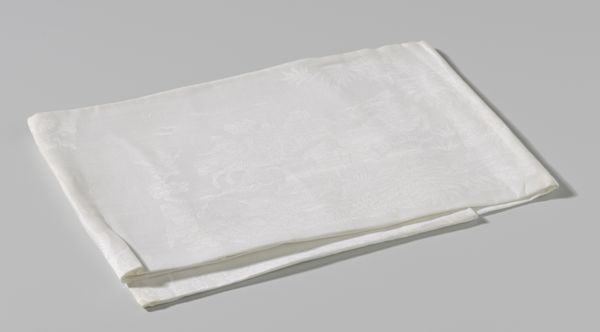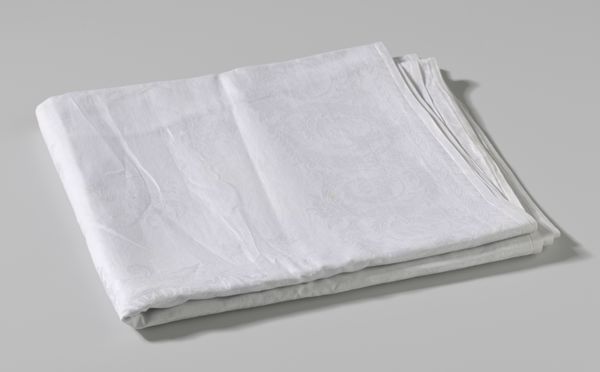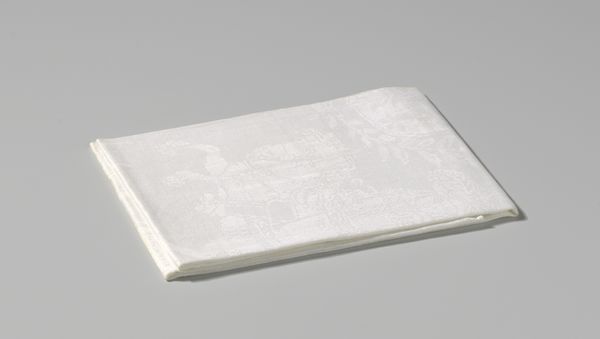
textile
#
product shot
#
art-nouveau
#
fashion mockup
#
studio lighting mockup
#
textile
#
product design photgrpaphy
#
embossed
#
product mock up
#
design mock up
#
decorative-art
#
studio mock-up
#
design on paper
#
foil embossing
Dimensions: height 134 cm, width 138 cm
Copyright: Rijks Museum: Open Domain
Editor: Here we have a textile artwork titled "Dekservet met dessin 'appelbloesem'," which translates to 'Doily with 'Apple Blossom' Design', made sometime between 1905 and 1930 by Theo Nieuwenhuis. The design is so subtle, almost ghost-like, against the off-white background. It gives off a very delicate, refined, almost ethereal quality. How do you interpret this work? Curator: The ghostly quality you note is key. Think about the apple blossom motif. What does that evoke? Beyond its obvious association with springtime and beauty, consider its transience. Blossoms are fleeting. Editor: So, are you saying the design is speaking to a kind of… ephemeral beauty? Curator: Exactly. And more than just simple beauty, this linen napkin connects us to cycles – both natural and cultural. These linens speak to rituals around dining and domesticity, particularly during the Art Nouveau period. This design subtly alludes to wealth, elegance, and a cultivated lifestyle. Imagine a carefully set table. These weren't merely functional items. Editor: I see. They become signifiers. Reminders of the seasons, of tradition, of societal values related to beauty and status all wrapped into a single item. It makes you wonder about the people who owned it. Curator: Precisely. These items become infused with the memory of gatherings and shared moments. Consider, too, that textile production itself carries a long cultural memory. From fiber to finished product, it reflects skill, labour, and artistic intention. What might appear simply decorative, then, speaks volumes. Editor: That's fascinating. I initially saw only a pretty pattern, but now I realize it's whispering stories about time, culture, and memory. Curator: Yes. Every thread has a story, and Nieuwenhuis managed to weave them together so delicately.
Comments
No comments
Be the first to comment and join the conversation on the ultimate creative platform.
